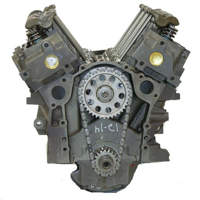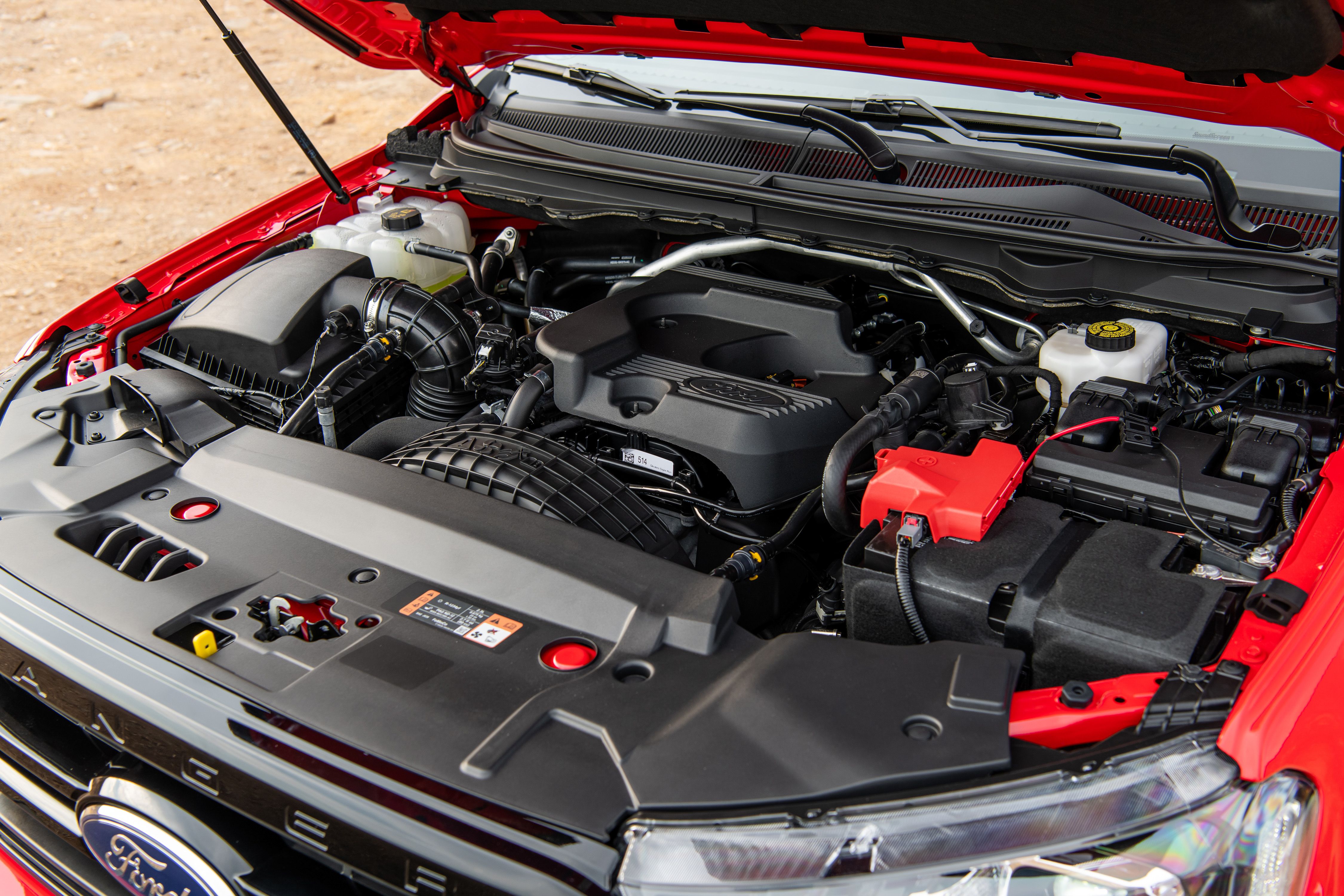How the 2.2 Ford Ranger Engine Delivers Power and Efficiency for Your Truck
How the 2.2 Ford Ranger Engine Delivers Power and Efficiency for Your Truck
Blog Article
Understanding the Fundamentals of Vehicle Engines: Features, types, and features

Review of Automobile Engines
A vehicle engine works as the heart of a car, transforming gas into power to push it onward. This intricate system comprises various components that operate in unison to guarantee ideal performance and efficiency. The fundamental procedure of a cars and truck engine involves the interior combustion process, wherein fuel and air are combined, ignited, and removed to create power.
The engine's style can considerably affect its performance, fuel effectiveness, and discharges. Secret parts consist of the cyndrical tube block, pistons, crankshaft, and camshaft, each playing an essential role in the engine's general function. The cylinder block houses the cylinders where burning takes place, while the pistons convert the explosive power from burning right into straight movement. This motion is then changed right into rotational power by the crankshaft, enabling the lorry's wheels to turn.
In enhancement to these parts, engines typically make use of different systems such as fuel injection, ignition, and cooling systems to enhance efficiency and durability. Understanding the basic technicians of car engines is vital for performing and detecting concerns upkeep, eventually adding to the car's integrity and effectiveness gradually.

Kinds of Automobile Engines
Vehicle engines can be categorized into numerous types based on their layout, gas kind, and operational concepts. 2.2 ford ranger engine. One of the most usual classifications consist of interior burning engines (ICE), electric engines, and crossbreed engines
Interior combustion engines, which can be more split into gas and diesel motor, operate by sparking a fuel-air mixture to generate power. Gasoline engines are typically lighter and smoother, while diesel motor are extra fuel-efficient and offer better torque.
Electric engines make use of electric power kept in batteries to power an electric motor, offering instant torque and zero emissions during operation. As innovation advancements, electric automobiles (EVs) are progressively ending up being preferred for their environmental advantages and lower running costs.
Hybrid engines integrate elements of both internal burning and electrical engines, permitting adaptable power resources and enhanced gas efficiency. They can operate in different settings, using either the gasoline engine, the electric motor, or both simultaneously.
Each type of engine has distinct advantages and disadvantages, affecting their application in various lorry types and market sectors, from portable automobiles to heavy-duty vehicles. Comprehending these kinds is necessary for making informed decisions regarding lorry option and efficiency assumptions.
Engine Features Discussed
Comprehending engine functions is important for understanding how automobiles operate successfully. At the core of any inner burning engine lies the basic process of transforming gas into mechanical energy.
The ignition happens next, firing up the mixture and developing a rapid expansion of gases. This force drives the piston down throughout the power stroke, which eventually equates right into the official website rotational activity of the crankshaft. The exhaust stroke after that expels the invested gases from the chamber, giving way for a brand-new cycle to start.
In addition to these key features, engines likewise include systems that manage air conditioning and lubrication, making certain optimum functional temperatures and minimizing friction between moving parts. This elaborate interaction of features makes it possible for the engine to produce the power required for automobile propulsion while keeping effectiveness and integrity. Understanding these functions offers useful insight right into the intricacies of automotive engineering and improves the ability to detect and address engine-related issues efficiently.
Secret Engine Attributes
Engine style includes numerous essential attributes that substantially influence performance, durability, and efficiency. One of one of the most critical aspects is the engine setup, that includes inline, V-type, and level designs. Each arrangement impacts the engine's size, equilibrium, and power output, consequently influencing total lorry characteristics.
One more crucial feature is the engine variation, referring to the total volume of all cyndrical tubes. Larger displacements normally produce more power yet may jeopardize gas effectiveness. Engine products also play a pivotal function; lightweight and high-strength products, such as light weight aluminum and magnesium alloys, enhance efficiency without including too much weight.
The kind of fuel injection system used-- such as direct or multi-port shot-- affects combustion efficiency and emissions. Turbocharging and turbo charging are functions that improve engine performance by forcing added air right into the burning chamber, raising power outcome without dramatically raising engine dimension.
Finally, the presence of innovative engine administration systems optimizes fuel-air combination and ignition timing, adding to smoother operation and better gas economic climate. Jointly, these functions define an engine's abilities, setting the foundation for its performance read this article and durability in an affordable automobile landscape.
Maintenance Tips for Engines
Correct engine upkeep is essential for making certain ideal performance and long life, as overlooking routine treatment can lead to substantial issues down the line. To maintain your engine properly, start with routine oil modifications, typically every 3,000 to 7,500 miles, depending on the sort of oil made use of. Fresh oil lubes engine components, lowering friction and wear.
Furthermore, checking coolant levels is crucial to stop getting too hot. Ensure that the coolant is covered up and remains in great problem to keep efficient temperature guideline. Frequently change and check air and fuel filters, as stopped up filters can impede air movement and gas shipment, compromising engine effectiveness.
In addition, focus on trigger plugs and ignition systems. Malfunctioning or used stimulate plugs can cause misfiring and minimized performance. Examining the battery terminals and connections for deterioration is additionally essential, as a weak battery can affect engine starting.

Conclusion
In recap, a detailed understanding of car engines encompasses different types, functions, and essential functions that significantly influence vehicle efficiency. Interior combustion engines, together with electric and hybrid options, show diverse systems for energy conversion. 2.2 ford ranger engine. Acknowledging the necessary features, such as consumption and exhaust cycles, along with vital engine attributes like setup and fuel shot systems, outfits auto owners with the knowledge required for effective upkeep and procedure, ultimately enhancing vehicle durability and efficiency
A car engine offers as the heart of a lorry, transforming fuel into mechanical energy to move it onward. The fundamental operation of a vehicle engine involves the interior combustion process, where fuel and air are blended, ignited, and eliminated to develop power.
Regularly replace and inspect air and fuel filters, as clogged up filters can impede air flow and fuel delivery, endangering engine efficiency. - 2.2 ford ranger engine
In summary, a detailed understanding of vehicle engines incorporates various kinds, features, and key attributes that considerably influence vehicle performance. Identifying the crucial features, such as intake and exhaust cycles, together with important engine functions like arrangement and fuel shot systems, furnishes car owners with the knowledge necessary for reliable upkeep link and operation, inevitably enhancing vehicle long life and effectiveness.
Report this page